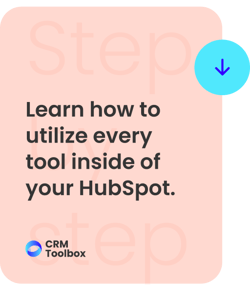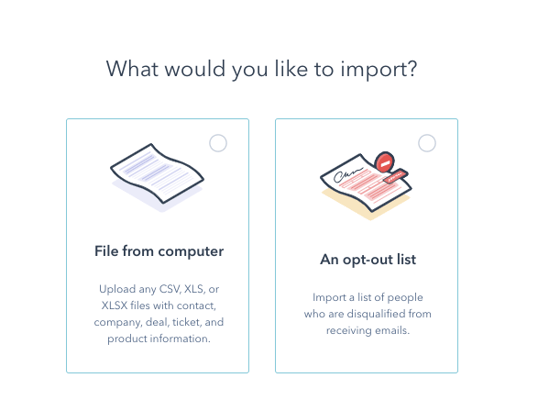Subscribe to ur Blog

10 Problems From the Disconnect Between Systems and Data
Ranya Barakat
One of the main consequences, when a company begins to grow, is the need to resort to different systems and programs to make the operation more efficient. However, with different area leaders imposing their own systems, there begins to be a disconnect between everything. It can stall your growth and create problems more serious than the ones it came to solve.
When the systems are not integrated, the data becomes questionable and any automatic process that depends on it is easily corrupted.
In the end, the lack of connection between systems can have economic, operational, and customer experience consequences.
1. Duplicate Data
One of the main headaches any company faces is duplicate data. It generates uncertainty in all users as they are not sure who the correct contact should be. As the business and the customer base grow, this error can exponentialize.
In addition to being an operational problem, data duplication is also the cause of a poor end customer experience. If your company aims to use a customer-centric approach, then this becomes a significant barrier to achieving that goal.
2. Analyzing the Data Becomes a Challenge
In addition to duplicate data, not having an integration between systems makes analysis a real pain. If the data is less reliable, your IT team must know what aspects to use in analysis. Then, they’ll have the second challenge of having to integrate them on multiple platforms and ensuring that they are in the same format.
3. More Resources (Human and Technological)
When the systems are not well integrated, instead of having fewer tools, you end up with more tools to unify the ones you already have. This creates unnecessary traffic and a greater risk of data loss, which can bring problems in the future. Additionally, you will have to spend more hours joining data, confirming information, and manually doing what a good integration could solve automatically. So, what initially seemed like a solution can turn into a problem without you realizing it.
4. Lack of Collaboration Between Teams
When each area has its own data and uses independent systems, an overprotective culture is generated within each team; they only trust the information in front of them, the information that only they have been working with. This becomes an obstacle in collaboration and when the teams decide to collaborate, friction arises over finding the most accurate information from all sides.
This translates into more hours verifying and sharing data between departments, less efficiency, and a serious blow to the company’s productivity.
Real collaboration is only possible when data flows freely and all areas of the company have the possibility of adding value to the singular set of data.
5. Losing Money
This is the result of missed opportunities and dissatisfied customers or prospects who were not treated as they should have been. The lack of data integration generates a bias in companies when making strategic decisions, generating a significant loss of profit. In addition, as we discussed in previous points, inefficiency in the operation means needing to have additional systems, which will cost more for your collaborators and the company’s budget.
6. Lack of Innovation
Disconnected data creates a blank spot in the information obtained from customers and prospects. This can become an inability to discover trends that could be key in the development of new products or services. By having incomplete information and miscommunication, those in charge stop making strategic decisions that lead to innovation. In a world as competitive as the one we live in, companies that do not innovate, vanish.
7. Not Very Forceful Reporting
It will be useless to have a dashboard and visually impressive reports if the data they illustrate is incomplete or not entirely real. Having a disconnect between data and systems means that your reporting tools do not receive complete information, and the ability to make decisions based on these panels is decimated. This means that the information that reaches managers and decision-makers is not fully curated, affecting how strategic company leaders can be.
8. Bad Customer Experience
One of the main frustrations a user has when interacting with a brand is the constant need to repeat themselves. When the data is well integrated and the systems talk to each other, everyone in the company has the complete context for each client, which allows them to provide a better experience. When the systems are not well connected and the data does not flow as it should, each point of contact could create new friction with the client, instead of resolving their issue efficiently, without repetition.
9. Inability To Automate Processes
Perhaps, one of the biggest drawbacks of not having a good integration between your systems is that it severely limits your company's ability to automate processes and create an operation that can grow exponentially. This leads to more manual work which leads to a greater risk of errors or failures. The safest way to ensure that systems run optimally is to have all the gears in place, allowing data to fuel your company’s growth.
10. Low Adoption of Your Collaborators
When information doesn't flow as it should because it's fractured, it's hard for employees to trust the systems they are using, so they show resistance to using the tools properly. Furthermore, each collaborator has to relearn each flow when a new system is added to the company. As you know, it will be useless to have the best system if the end users do not use it as they should.
How To Avoid These Problems
The best way to deal with these problems is somewhat obvious: make sure the systems are integrated from the start. However, we know that this is not always as simple as it seems.
To solve your integration problems there are points you must take into account:
1. Understand Your Data
Before making any decision, it is important to have a complete vision of the current situation of your tech stack and your databases. This is achieved by doing a complete analysis of what systems you have, how they are connected, and which area of the company is using each tool. Oftentimes, you discover that different departments use different systems for similar things.
2. Integrate What Is Possible
Now that you've got the big picture of your tech stack, it's time to start connecting the dots. Some systems are not integrated with each other more because of ignorance than a lack of possibility. Learn which of your tools can be integrated and seek to remove those that cannot.
Then, generate the necessary automated flows and continue to grow your tech stack on this basis.
3. Do Not Stop Training
One of the reasons data begins to fail is mismanagement. It is not due to evil teammates but to a lack of training and updating.
Keeping your collaborators trained and up-to-date not only guarantees better adoption but also empowers them to optimize their use of each system.
4. Find An Expert
The cost of working on your own is usually greater than the opportunities lost by not working with a company that already has more experience in complex system integrations.
Plus, by working with an expert partner or third-party freelancer, you not only shorten implementation times but gain market best practices and insights that might otherwise take months to gain.
At CRM Toolbox, we have years of experience helping companies integrate their systems and enabling them to take their business to the next level. If you're overwhelmed by the amount of information and don't even know where to start, schedule a call with me. I would love to talk about your challenges and needs, understand your business, and accompany you on this journey.
Related Reads
Master HubSpot tools & unleash a world of endless possibilities!
Unlock Your HubSpot Powerhouse: Contact Us to Transform Your Digital Journey!

Ranya Barakat
Ranya is a serial entrepreneur with over 8 years of experience working on the HubSpot CRM. She loves pushing her sleeves up , and getting s*** done. When she is not running her HubSpot partner agency, you can find her upside down on her yoga mat.
Subscribe to our blog
The best information about inbound marketing, sales, guides and migrations.



